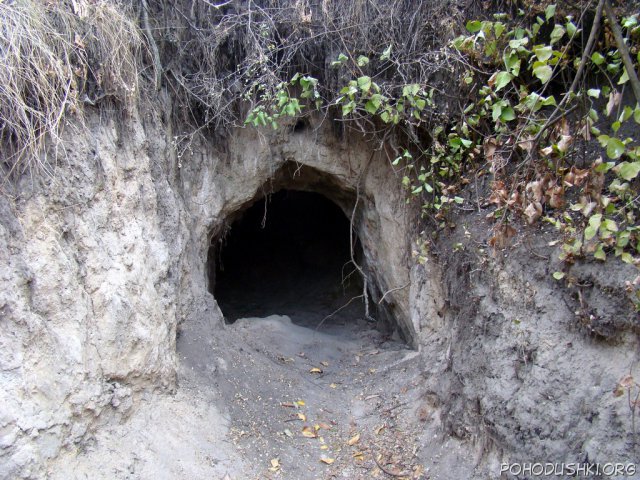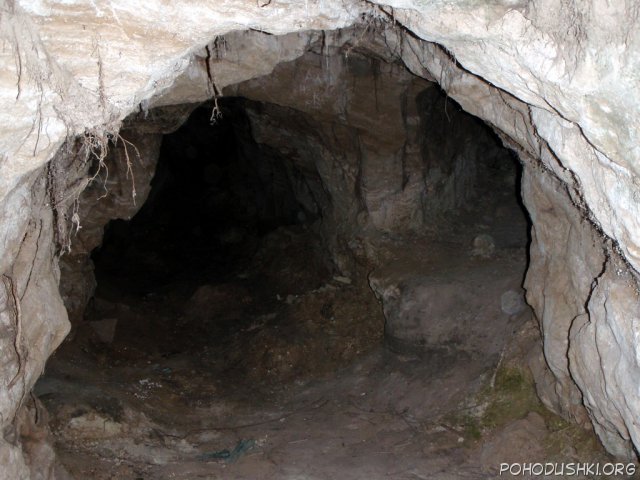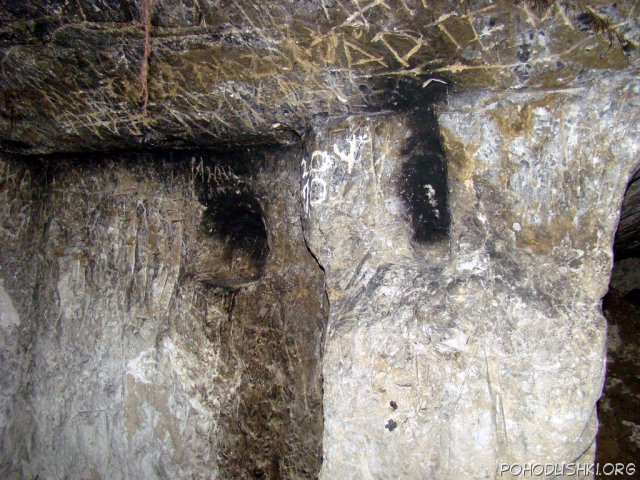- Home
- Local attractions
- Dmytro Horsky's Cave
Local attractions
Dmytro Horsky's Cave

At the foot of Pristina is a very rare historical monument - caves, the creation of which belongs to the period of settlement of our region, ie until about the middle of the seventeenth century. At that distant, turbulent time, these caves, apparently, served as a kind of shelter for the first settlers from the attacks of militant neighbors (Turks, Tatars, Kalmyks, Nogai).
The creation of such shelters - quite original and relatively reliable - is not uncommon: similar caves can be found in other parts of our region.
But at the end of the eighteenth century the caves became the residence of a man known as Dmitry Gorsky. It should be noted that various legends about the history of these caves have been passed down by word of mouth for many years. At the same time, the popular rumor adorned the stories with such facts that can hardly be considered real. For example, some residents of Novopskov and Osinovo, between which the caves are located, seriously claimed that not far from this place is hidden some mythical treasure. But the life story of Dmitry Gorsky is quite real and reliable. Information about this man can be gleaned from such sources as "Historical and statistical description of the Kharkiv diocese" and "Life and work of the peasants of the Kharkiv province", published in Kharkov in the XIX century.
Ascetic Dmitry Gorsky was born in the middle of the eighteenth century. As an adult, he pushed him during an argument with his drunken father. After repenting of his sin, Dmytro went to the square in Kyiv. The monks of Kyiv told him that in order to atone for this grave sin, he should cut off the brush of his right hand with an ax, which he pushed his father with. If the cut part grows, it will be a sign that God has forgiven it, and if not, you need to pray for sins until death. Dmitry did everything he was told in the monastery. Soon his hand grew together, but remained crippled. After Dmitry married his daughter, he left his house to a poor man and went to live in a cave, where he fasted and prayed for about 50 years. The ascetic ate once a week, slept in the bushes. Every day believers from the village came to him. Osinove, Novopskov and other settlements and hamlets, which Dmitry always gladly met, gave spiritual advice, comforted. The church people respected and loved him. For 30 years, the elder taught local children to read and write.
Dmytro Horsky died on December 17 (30), 1828. Every year, a week before Christmas, priests from Osyniv and Novopsk served a memorial service at the grave of Dmytro Horsky at the request of the people. The pilgrimage stopped during the Soviet era.
An important factor that contributed to the preservation of the caves was the presence of a fairly dense, clay-chalk soil. At the time when these caves were created, they naturally had larger than now, size and perhaps a slightly different configuration. According to descriptions made in the middle of the XIX century, the dimensions of the central tunnel were as follows: height reached 240 cm, width - 120-150 cm. In subsequent years, the caves were partially destroyed. Attempts to clear them were made in the XIX century.
Of course, time has not spared the historical monument. Over the past decades, they have been prone to washing away and landslides. In the late 1960s, the caves were as follows: a small central entrance, which in its size rather resembled a beast's burrow and two narrow corridors. In 1990, on the initiative of the Novopskov Museum of Local Lore, work began on the restoration of this object. It was planned to clear the central corridor and internal chambers, strengthen the vaults of the caves, some external works (for example, the collapse of the surface of the cave in order to divert surface water, which causes them significant damage).
The purpose of the complex was not only to preserve this historical monument, but also the desire to open this place to visit all those who are interested in the history of our region. But, unfortunately, in the early 1990s, these works, due to known events and related reasons, were preserved.
Photos:



